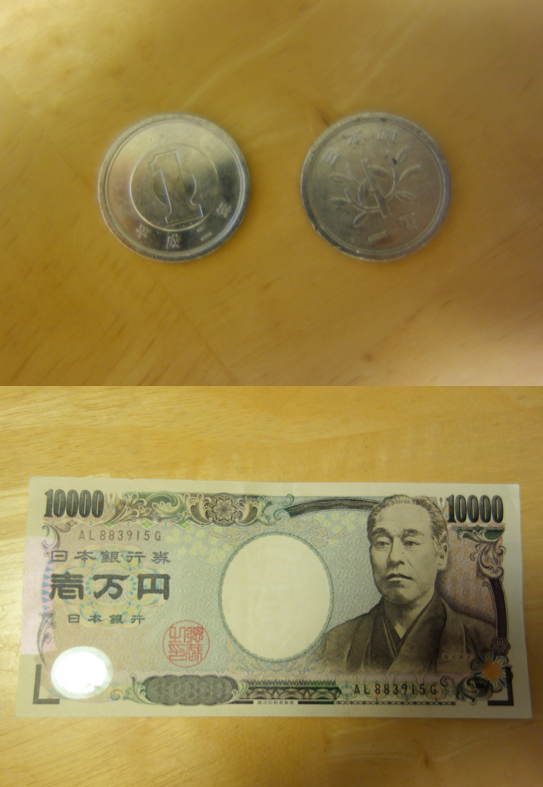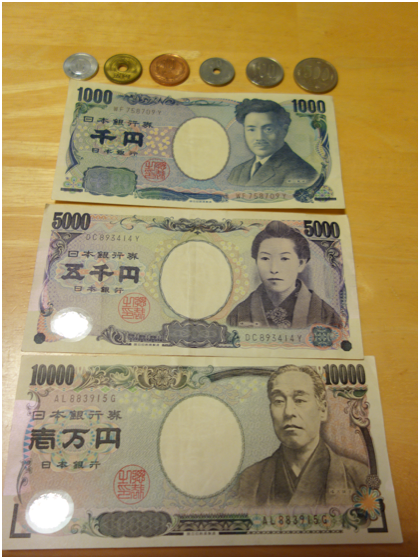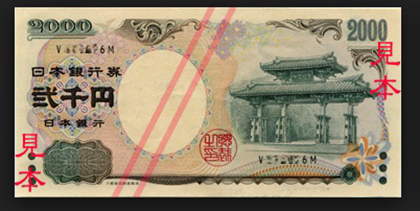The unit of currency in Japan is the yen. Currently, there are six types of coins and three types of bills in circulation: 1, 5, 10, 50, 100, and 500 yen coins and 1,000, 5,000, and 10,000 yen bills.
The 1 yen coin, the smallest in value, is made of aluminum and weighs 1 gram. The 1 yen coin now in use bears a design chosen from among ideas submitted by the public in 1955. After consumption tax was introduced in 1989, the amount of 1 yen coins in circulation rose dramatically and they were produced in large quantities. Since 1997, however, when consumption tax was increased from 3% to 5%, the amount of 1 yen coins in circulation decreased. The 1 yen coin was also affected by the popularization of electronic money, and beginning in 2011 was no longer produced for general circulation. In 2013, production of the 1 yen coin for general circulation was resumed when an upcoming increase in consumption tax from 5% to 8% in 2014 was predicted to increase the amount of 1 yen coins in circulation.
The changes undergone by the 1 yen coin suggest that consumption tax has a major impact on circulation. If the 8% consumption tax is raised again to 10%, which the Japanese government is now considering, it is predicted that the amount of 1 yen coins in circulation and the amount produced will again decrease.

The largest unit of currency now in circulation, the 10,000 yen bill, was first issued in 1958. Since then, the design has been revised twice. The current design on the 10,000 yen bill was first issued in 2004. At the same time, the designs on all bills were revised but the 10,000 yen bill was the only one whose portrait was not changed. A variety of anti-counterfeiting measures are utilized in producing the 10,000 yen bill. When the design was revised in 2004, more than 10 types of Japan’s latest technologies were utilized to produce the 10,000 yen bill. In addition to the watermarks and intaglio printing that were already present in the former design, other measures are implemented including holograms, microprinting, a semi-transparent pattern that appears when the bill is viewed from a certain angle, and a portion of the bill that changes color when viewed under ultraviolet light in order to make it more difficult than ever to produce counterfeit bills.
Getting off the subject, the unusual 2,000 yen bill is also currently in circulation in small amounts. The 2,000 yen bill was issued in 2000 to commemorate the millennium year and the G3 Summit in Okinawa. It was the first unit of currency introduced after World War II other than 1 and 5 and gained much attention at the time it was issued. However, the Japanese were used to currency in units of 1 and 5, so the new 2,000 yen bill never came into daily use. It circulated for a while, but is rarely seen these days. The 2,000 yen bill has not been produced since 2003. Now a large quantity of 2,000 yen bills is reportedly stored in the vaults of the Bank of Japan.

